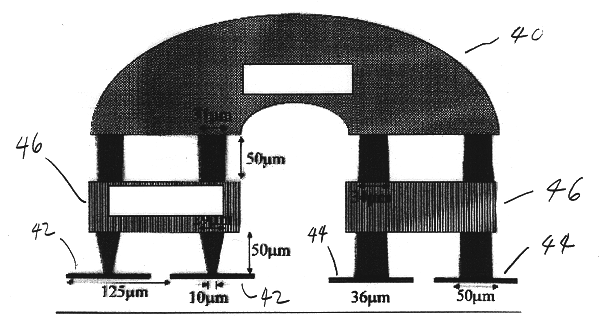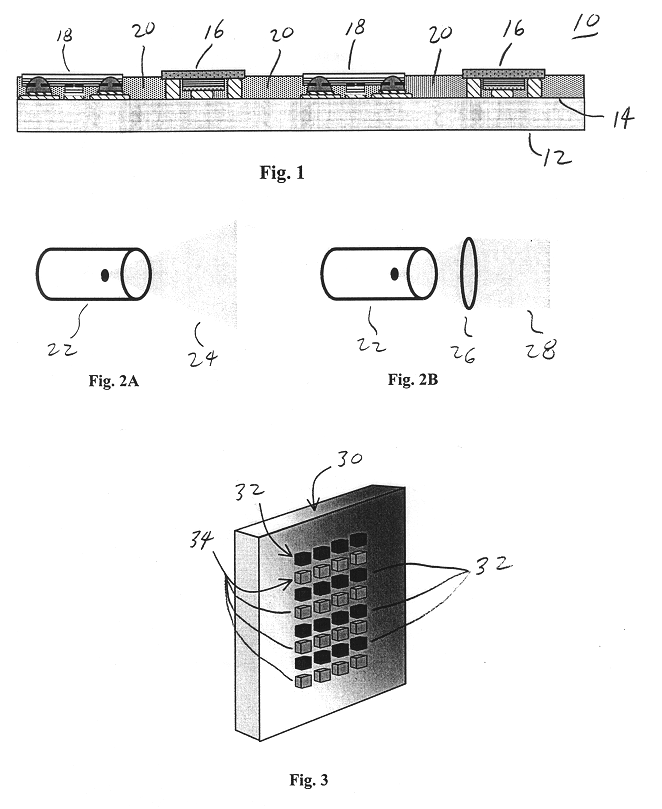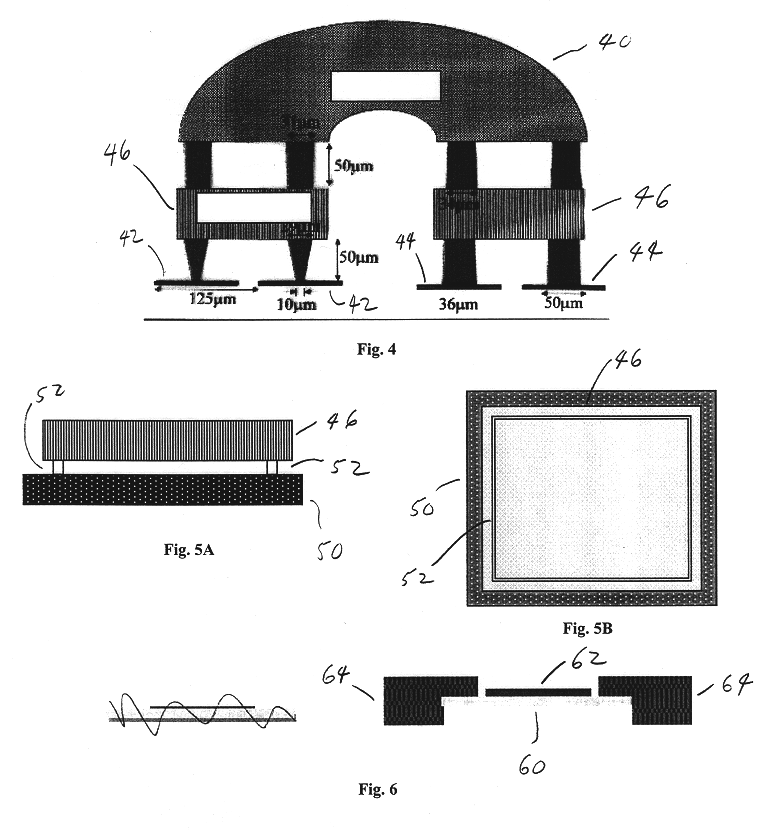Optoelectronic connector system
- Summary
- Abstract
- Description
- Claims
- Application Information
AI Technical Summary
Benefits of technology
Problems solved by technology
Method used
Image
Examples
Embodiment Construction
As shown in FIG. 1, an optoelectronic device 10 is provided, consisting of a silicon substrate 12. On the upper surface of substrate 12, alternating detectors 16 and laser emitters 18 are attached with epoxy filler 20 therebetween. Each emitter has a means for electrical connectivity embedded in the chip and connected to the chip substrate and package. Typical emitters may be 10 .mu.m in size, constructed on 125 .mu.m centers. Similarly, a detector array is constructed using detectors 50 .mu.m in size, spaced identically to the emitter array. In FIG. 3, an array of emitters 32 and detectors 34 are attached to substrate 30.
One problem with optical emitters is that the light produced is uncollimated, that is, it will disperse over some angle, as shown in FIG. 2A where emitter 22 produces uncollimated light 24. As shown in FIG. 2B lens 26 can be used to produce collimated light 28. This is useful for transmission both through free space through fiber optic media.
As shown in FIG. 4, the...
PUM
 Login to View More
Login to View More Abstract
Description
Claims
Application Information
 Login to View More
Login to View More - R&D
- Intellectual Property
- Life Sciences
- Materials
- Tech Scout
- Unparalleled Data Quality
- Higher Quality Content
- 60% Fewer Hallucinations
Browse by: Latest US Patents, China's latest patents, Technical Efficacy Thesaurus, Application Domain, Technology Topic, Popular Technical Reports.
© 2025 PatSnap. All rights reserved.Legal|Privacy policy|Modern Slavery Act Transparency Statement|Sitemap|About US| Contact US: help@patsnap.com



